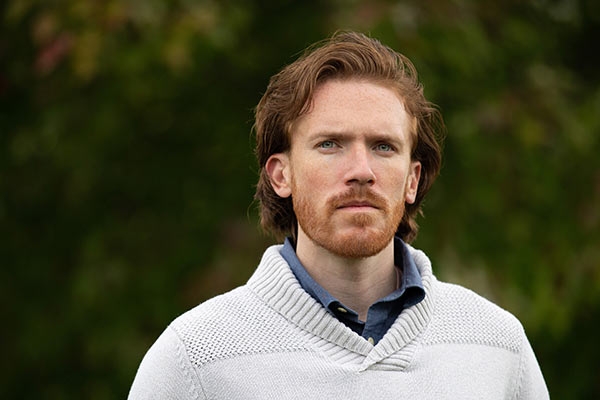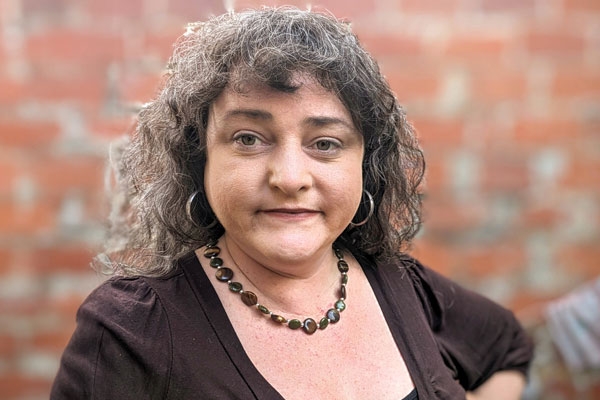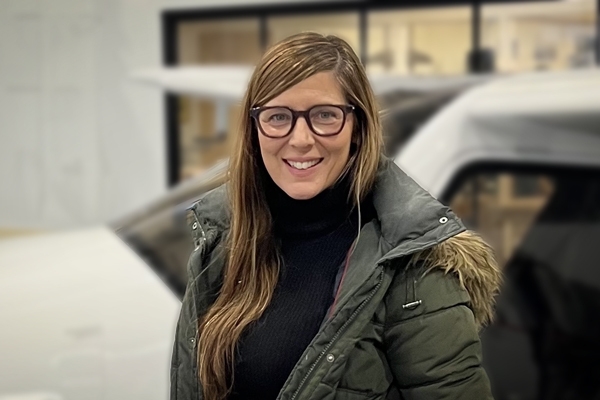I had just turned twenty-three. A few months earlier, recently graduated from UC Berkeley with a degree in Latin American Studies and a penchant for travel, I had sent off a letter and résumé to a ‘teach English in Japan’ ad in the San Francisco Chronicle classifieds. I thought the application and interview process, if I got that far, might be good practice for the perfect teaching job I was hoping to get in Brazil.
—from Jordan’s essay “White Chrysanthemums,” Ursa Minor, Volume 3: Fault
Sometimes, life provides you with the plot twists to tell your story.
Exposition: Her Love of Language
Barbara Jordan got the job with AMVIC (now known as Aeon), one of Japan’s “Big Four” conversational English schools, and started her career teaching English in Shizuoka, Japan. During that year abroad, she met the man she’d later have a child with and marry. Her artist husband’s skill in fine-art bronze casting brought them to Arizona for a job at a foundry. Back in the States, Barbara pursued a master’s in English education from Arizona State University and eventually landed a faculty position at a community college teaching English as a second language.
But after teaching grammar and composition to immigrant and international students for 35 years, the creative writer inside of her wanted to come to the fore.
“As is common with many English teachers,” Barbara says, “I thought of myself as a teacher who might have been a writer if my life path had led me there instead of into the classroom. I had dabbled with writing, mostly narrative nonfiction pieces or articles related to teaching or traveling, some appearing in print in educational publications of some kind or another.
“After so many years in academia, I wanted to develop a more personal writing voice and venture into a new community of readers and writers.”
With her retirement on the horizon and a deep desire to return to Berkeley, California, where she had gone to college, the time for change was coming.
Rising Action: Seeking a Creative Outlet
An online search later, Barbara found our Certificate Program in Writing. It sounded like something worth pursuing, with its courses online and in the classroom—perfect for when she returned to the East Bay.
“Already 57 years old and recently retired with a decent pension, I didn’t want to pursue an M.F.A. because of the expense,” Barbara affirms. “As a graduate of UC Berkeley, I was drawn to my alma mater and checked to see if there might be creative writing courses available through Extension. When I saw the certificate program, it seemed perfect for me. The program was streamlined and affordable, and the faculty biographies reassured me that the quality of instruction would be high.”
Just how high surprised Barbara.
“I gained valuable insight into reading and writing from every instructor and every course.”
“While still in Arizona, I completed my first course—The Craft of Reading—online with Maggie Trapp. The class was intellectually stimulating and surprisingly rigorous for a 2-credit course. The students were from many different states and countries, and the online discussions and sharing of writing inspired much lively interaction,” she recalls.
That high bar continued in face-to-face classes once she moved back to California.
“I was pleased and relieved to meet people of varying ages, backgrounds and life experiences,” Barbara enthuses. “The diversity of thought and reasons for pursuing writing made every class unique.”
World-Class Instruction That Opens Doors
Instructors who teach in the Writing program are published writers and who tend to be active in their local writing communities. They also get their students active in writing circles.
Barbara studied with Margo Perin, Audrey Ferber, and twice with both Dan Coshnear and Monica Wesolowska. “I gained valuable insights into reading and writing from every instructor and every course.”
But it was Dan Coshnear who Barbara says made the biggest difference in her writing.
“In Dan’s The Craft of Writing course, I hit the jackpot,” Barbara effuses. “Dan is a teacher beloved by many. I will always be grateful for his insightful commentary and the wonderful class readers he compiled that introduced me to writers I might never have known about otherwise. He helped me develop an awareness of myself in relation to my writing that continues to serve me well.
“I left Dan’s class with a treasure: a writing group that formed organically and continues to this day. This great group of writers I now consider close friends and writing companions.”
Another benefit of Barbara’s experience in the Certificate Program in Writing: the opportunity to produce our art and literary journal Ursa Minor.
In lieu of taking a traditional literature elective to fulfill certificate requirements, students sometimes have the option of taking the Ursa Minor Production class instead. Such was the case with Barbara, who had previously completed many undergraduate- and graduate-level literature courses.
“I jumped at the opportunity,” she says.
“Once again, I met a great group of people and learned much from them throughout the selection process and publication of Volume 2: Dark Matter. Liz McDonough is an amazing managing editor. Working under her expert guidance, and that of academic advisers Dan Coshnear and Laurie Ann Doyle, and student adviser and poet Lisa Wenzel, I selected poetry and nonfiction submissions and worked individually with some of the authors on editing and revising their pieces.”
Her work on Ursa Minor also benefited fellow students. “I’ve read pieces of fiction written by other students that became the writing samples they used to get into prestigious M.F.A. programs around the country. I fully expect to be reading published short stories and novels by these people soon.”
This production experience gave Barbara enough confidence in her own work that she submitted a couple of pieces for Ursa Minor, Volume 3: Fault. Her nonfiction essay, "White Chrysanthemums," was accepted for publication.
Falling Action: Finding Her Voice
Barbara has much more of her story to tell. And thanks to her instructors in the certificate program, she now writes with her honest voice. It was with her all along.
“When I first began taking courses, I had chunks of writing that I thought I might weave into a book-length braided narrative someday,” Barbara says. “With the help of many instructors—but especially of my astute memoir teacher, Monica Wesolowska—I came to the realization that the genre of writing that most appealed to me was, surprisingly, the personal essay.
“I also became aware that despite my desire to slough off the somewhat academic voice I had developed over the years, it was my most natural and honest voice. I also realized that although I am a decent writer, I’m probably a better editor, proofreader and motivator. I know good writing when I see it. Recognizing and encouraging the talents of others gives me great pleasure. I’m currently the writing coach for a friend who is working on a novel, and I’m championing the poetry, short stories and novels being written by the talented members of my writing group.”
Resolution: Her Vision for Her Future
Barbara’s completion of the Writing certificate program has also allowed her to pay it forward.
“I’m working on a proposal for a personal narrative writing contest and subsequent publication for immigrant and international students at the Contra Costa County community college where I now teach. My experience serving as an editor for Ursa Minor, along with the Writing certificate [which she completed with distinction], will support my efforts to fund the proposal. Looking forward five years, I hope I will have seen this budding project to fruition.”
As for her own writing in the not-so-distant future?
“Writing in various stages of revision sits in manila folders behind my writing desk and waits patiently on my hard drive for my attention. I’m not sure which pieces the muse will next inspire me to return to, but perhaps some of them will have reached their intended audiences.”



